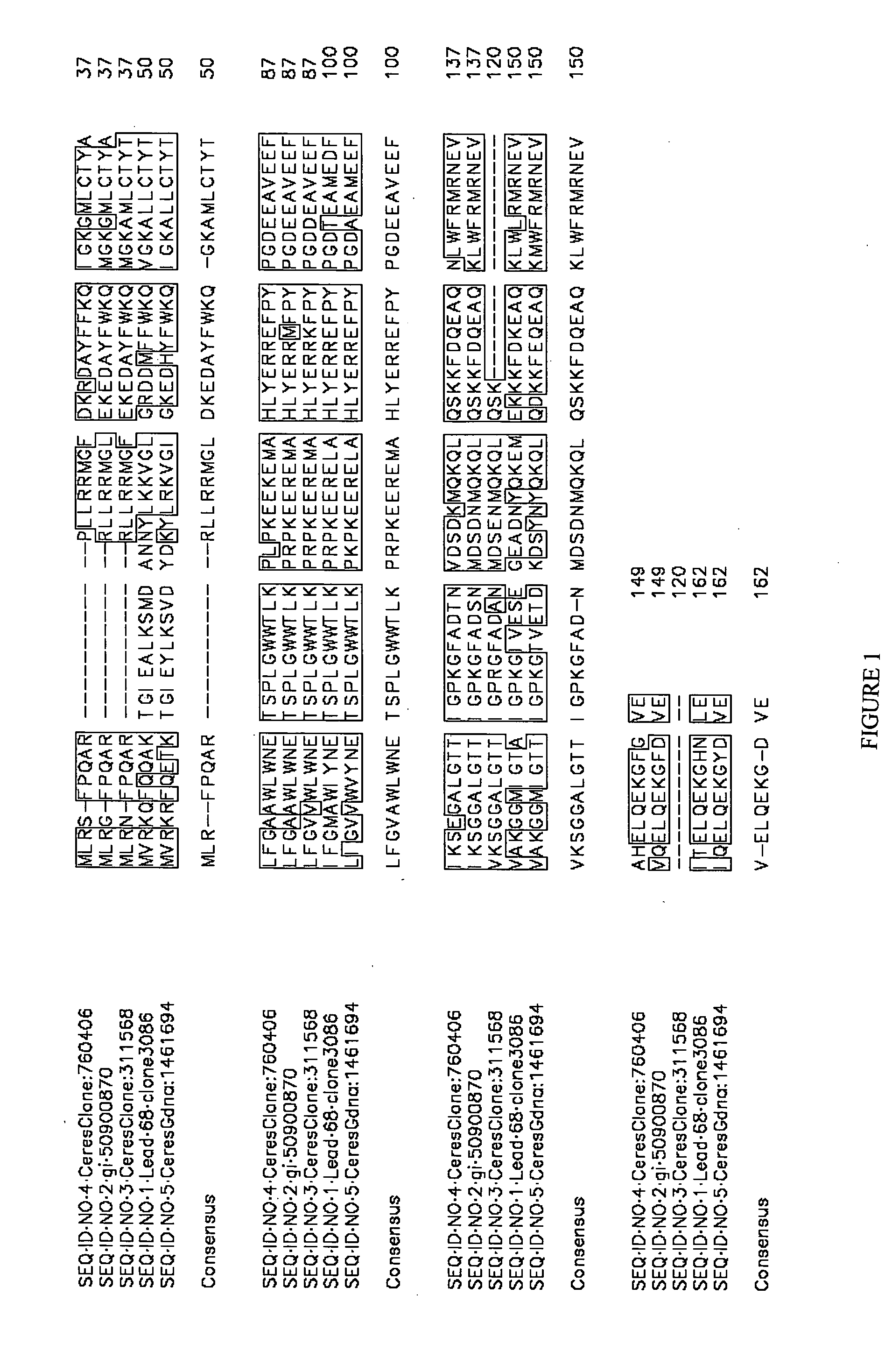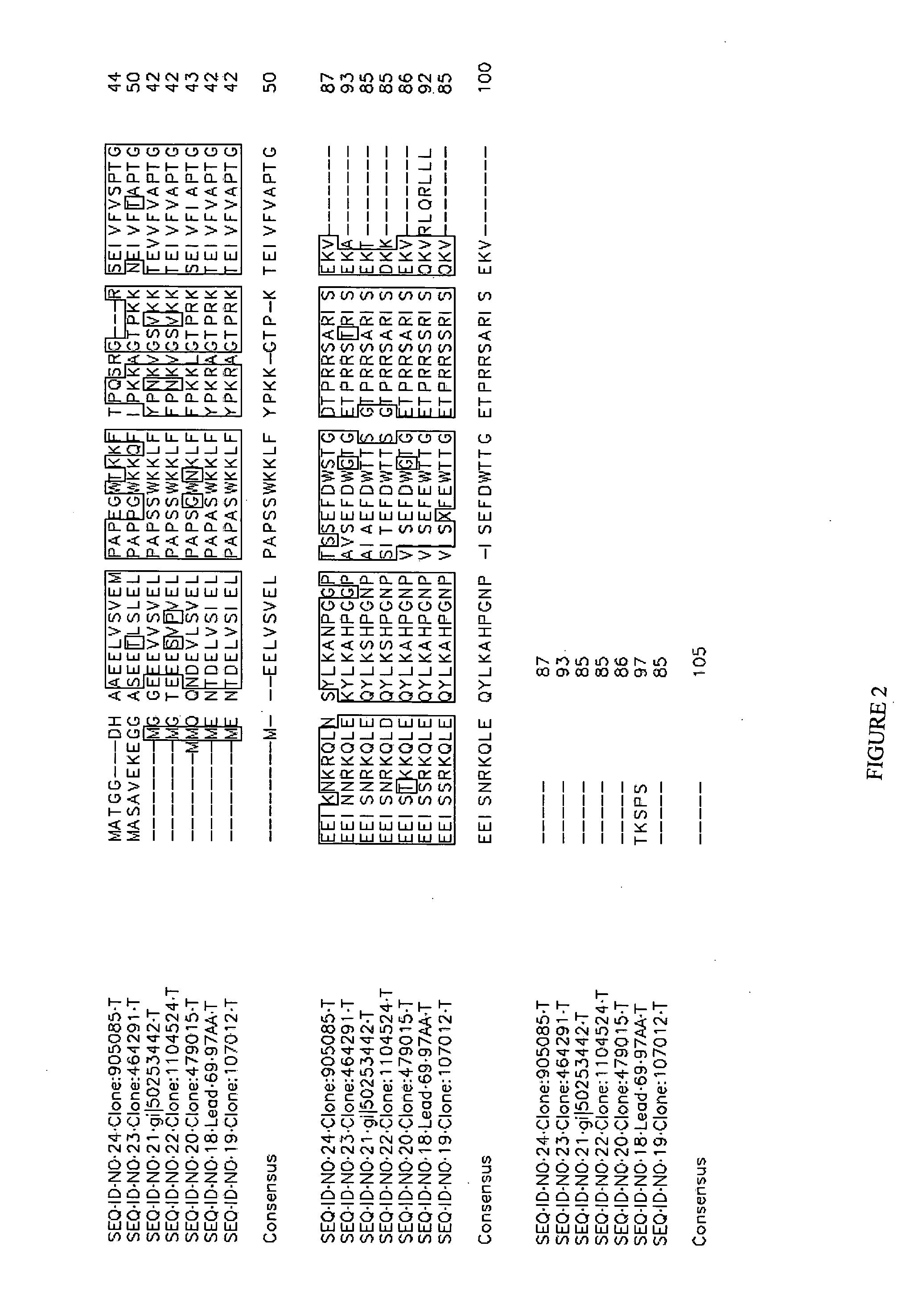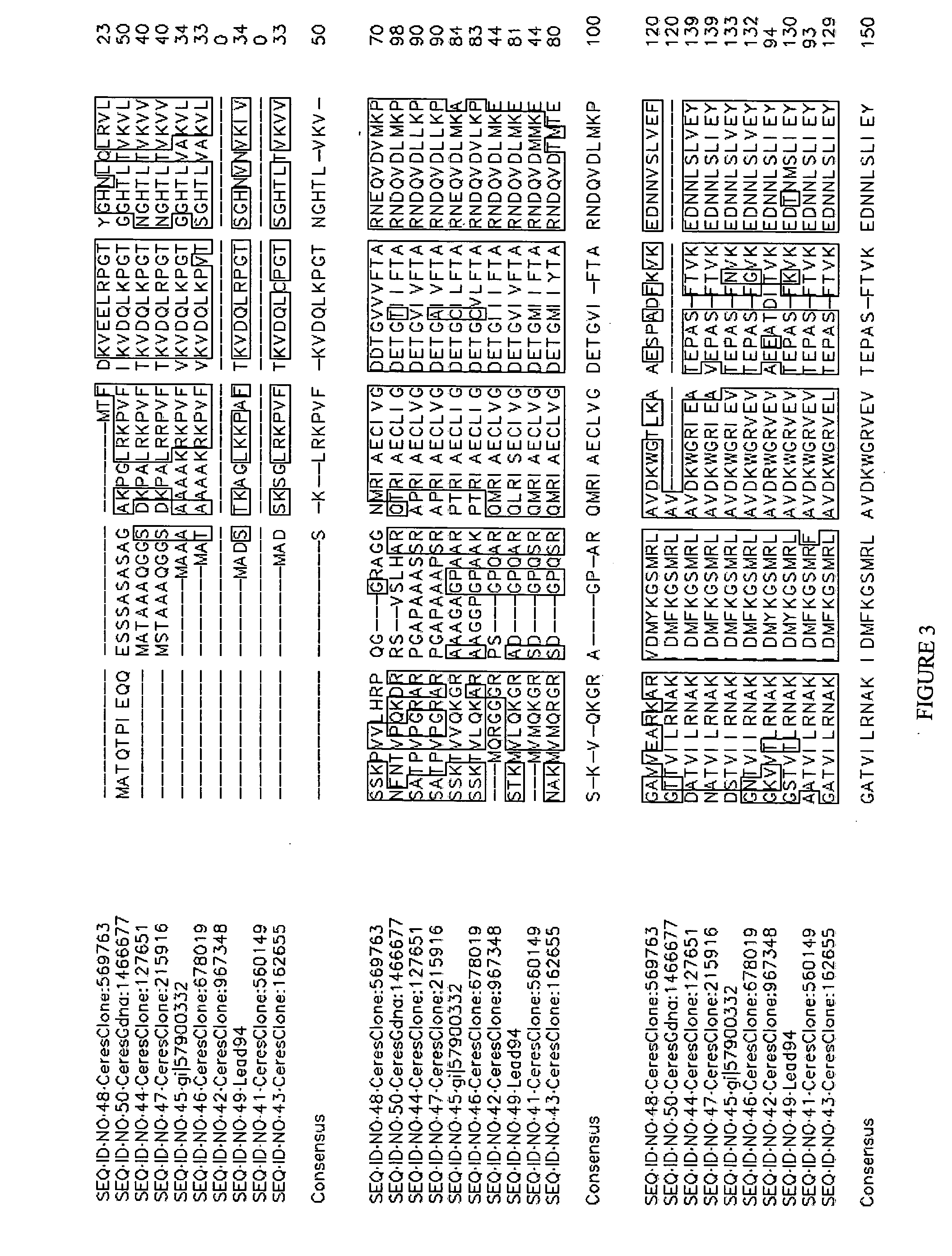Nucleotide sequences and polypeptides encoded thereby for enhancing plant drought tolerance
a technology of nucleotide sequences and polypeptides, applied in the field of isolated polynucleotides and polypeptides encoded thereby, can solve the problems of low yield of plant material, seeds, fruit and other edible products, all agricultural regions are prone to drought, and the breeding process is time-consuming and laborious. to achieve the effect of enhancing drought toleran
- Summary
- Abstract
- Description
- Claims
- Application Information
AI Technical Summary
Benefits of technology
Problems solved by technology
Method used
Image
Examples
example 1
Lead 94-ME04218-Clone 15450-cDNA 14297769
ME04218 was Identified from a Superpool Screen for Desiccation Tolerance.
[0133] Superpool 29 was screened for plants that resisted wilting by testing them for drought tolerance as described above. Twelve candidates were chosen from Superpool 29. All were successfully sequenced. ME04218 was represented once in this set. The gene corresponding to Clone 15450 is upregulated in germinating seeds and reproductive tissues including: flowers, pollen and siliques.
Three Events of ME04218 Showed Desiccation Tolerance in a Pre-Validation Assay.
[0134] Seeds from all four events of ME04218 were sown according to the Soil Drought Pre-Validation Assay. Events -01, -02 and -04 segregated for desiccation tolerant seedlings and were advanced to the validation assay where they were scored 1-5 as described above. Event-03 failed to germinate. Three events of ME04218 showed significant desiccation tolerance.
[0135] Seeds from three T2 events of ME04218 were...
example 2
Lead 95-ME01466-Clone 26369-cDNA 14298505
ME01466 was Identified from Superpool Screens for PEG and Mannitol Tolerance.
[0139] 1200 seeds from Superpool 01 were screened for seedlings with increased vigor and growth on 20% PEG plates or on 375 mM Mannitol plates. In follow-up experiments, T2 seeds from Events -01 and -02 were observed to segregate in approximately a 3:1 ratio of tolerant to non-tolerant seedlings on PEG and Mannitol. Event-04 also segregated tolerant plants on PEG, but not in a 3:1 ratio. These observations indicate that ME01466 confers tolerance to osmotic stress. These Events were subsequently tested for desiccation tolerance in soil.
Three Events of ME01466 Showed Significant Desiccation Tolerance.
[0140] Three experiments were completed to test events of ME01466 for dessication tolerance. Table 2-1 shows the combined results from all three experiments.
TABLE 2-1Chi-square test of desiccation toleranceEvent-Non-Chi-TestEventsGenerationTSaToleranttolerantTol_Ex...
example 3
Lead 69-ME01854-Clone 16209-cDNA 23462374
ME01854 was Identified from a Superpool Screen for Mannitol Tolerance as a Line to Assay Under Soil Drought.
[0147] Superpool 4 yielded ME01854 as a Mannitol-tolerant plant line. Individual events -01 through -04 and -08 were tested for ABA, Mannitol, and PEG tolerance. Events -03 and -08 showed definitive ABA tolerance in two generations.
Two Events of ME01854 show 3:1 Segregation for Finale™.
[0148] Events -03 and -08 segregated 3:1 (R:S) for Finale™ in the T2 generation.
Two Generations of Two Events of ME01854 Show a Delay in Desiccation in Response to Water Deprivation in Comparison to Controls.
[0149] Events ME01854-03 and -08 were selected for testing on soil drought based on their surrogate drought screen results. Aspects of drought resistance such as desiccation delay and drought recovery were used to evaluate overall drought performance. In both the T2 and T3 of the two events, the transgenics showed a significantly improved per...
PUM
| Property | Measurement | Unit |
|---|---|---|
| temperature | aaaaa | aaaaa |
| temperatures | aaaaa | aaaaa |
| temperatures | aaaaa | aaaaa |
Abstract
Description
Claims
Application Information
 Login to View More
Login to View More - R&D
- Intellectual Property
- Life Sciences
- Materials
- Tech Scout
- Unparalleled Data Quality
- Higher Quality Content
- 60% Fewer Hallucinations
Browse by: Latest US Patents, China's latest patents, Technical Efficacy Thesaurus, Application Domain, Technology Topic, Popular Technical Reports.
© 2025 PatSnap. All rights reserved.Legal|Privacy policy|Modern Slavery Act Transparency Statement|Sitemap|About US| Contact US: help@patsnap.com



